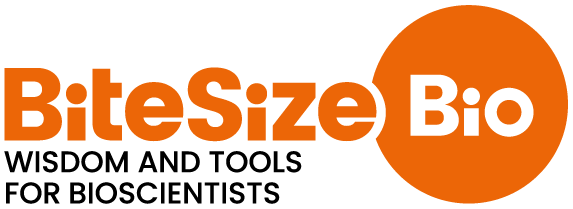All Episodes
Displaying 41 - 60 of 115 in total
How to use a Hemocytometer
#75 — Counting your cultured cells is vital to seeding the right density for your experiments, harvesting an appropriate amount of downstream experiments, preparing ce...

Understand How Alkaline Lysis Works
#74 — Understanding how a technique works make it simpler to troubleshoot when things go wrong in your experiments. Learn how alkaline lysis works in this short and si...

All About the qPCR Standard Curve: The Key to Good PCR Data
#73 — PCR is a fundamental technique all biologists rely on, and, for qPCR, we can construct a standard curve that tells us how good or bad our primers are.In this epi...

10 Fun Hobbies for Scientists
#72 — Research requires imagination and strategy, and helpful distractions can give us the mental rest we need to recharge. Fun hobbies for scientists can provide insp...

How Histology Slides Are Prepared
#71 — A good histology slide can give you beautiful, revealing microscope images of your precious tissue samples. But what goes into preparing slides for histology? Wh...

6 Laboratory Sterilization Methods and How They Work
#70 — Sterilization is a critical technique in the biology lab. It keeps your cell lines free from contamination, allows safe disposal of used items, and prevents brea...

Types of Digital Images for Stunning Science Publications
#69 — Figures are a fundamental way to communicate science and are essential components of journal articles. In this episode, learn the differences between vector and ...

5 Controls for Immunofluorescence: A Beginner’s Guide
#68 — Controls are fundamental to getting meaningful data. Especially in long, drawn-out experiments like immunofluorescence imaging. In this episode, we explain 5 typ...

What is Water of Crystallization? Everything You Need to Know
#67 — What are those mysterious extra water molecules at the end of some chemical names? Do they matter to your experiments? And what should you do when they aren't wa...

Better Plasmid Purification: 11 Reasons Your Plasmid Yield is Low
#66 — Are your plasmid yields low? Not sure what is considered a good yield? Need help boosting the amount of plasmid you get from your preps? In this episode, we disc...

The Importance of Delegation for Scientists
#65 — Delegation is not just for managers! No matter where you are in your research career, there is an opportunity to delegate. In this episode, we discuss how you ca...

How To Make ECL Reagent: 4 Ingredients, Better Blots
#64 — Like many experiments, doing a Western blot typically means comparing half a dozen online protocols, failing completely, triple-checking the recipes of your more...

3 Hot Tips to Optimize Your Western Blot Transfers
#63 — Are you fed up with Western blots that look like your pen leaked in your pocket? We all are. That's why we've put together our three favorite tips for better Wes...

Top 5 of the Most Commonly Used Cell Lines
#62 — Do you want to use a cell line but are unsure where to start? Or perhaps you’re just curious about the most commonly used cell lines. Listen to our top 5 most co...

Get a Grip: Dealing with Sweaty Glove Hands
#61 — Fed up with fighting to put on another pair of gloves with sticky hands? Faced the embarrassment of giving a sweaty handshake? You need to listen to our top tips...

What Ponceau S Staining Can Reveal About Your Western Blot
#60 — There's nothing quite as frustrating as imaging a western blot only to find your bands are a wonky mess, your blot is covered in bubbles, or your bands are missi...

Plasmid Incompatibility: Should You Care?
#59 — Have you heard of plasmid incompatibility? Should you be worried about it? Listen to this episode of Mentors At Your Benchside to discover exactly what plasmid i...

Protein Colocalization: 2 Essential Methods to Prove Protein Overlap
#58 — One of the most common goals in biology is to prove that two proteins colocalize. Usually, colocalization happens as part of a crucial disease pathway or poorly ...

Why Do Enzymes Have Optimum Temperatures?
#57 — Some microbes survive at 37°C, and some survive at 90°C. So why do their respective enzymes have optimum temperatures? Listen to this episode and learn about the...

The How and Why of Removing Serum From Your Media
#56 — Do you add serum, such as fetal bovine serum, to your cell culture medium? This ingredient may be critical for cell growth and proliferation, but it could negati...


